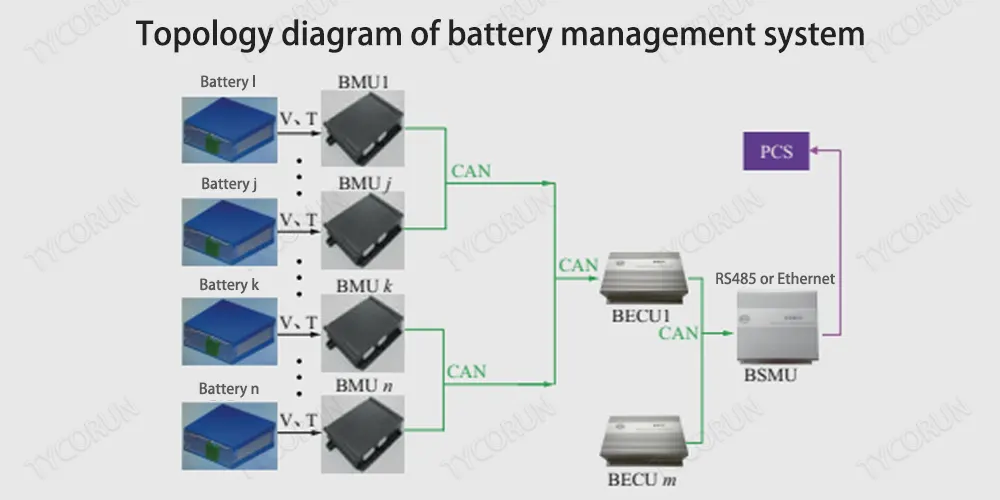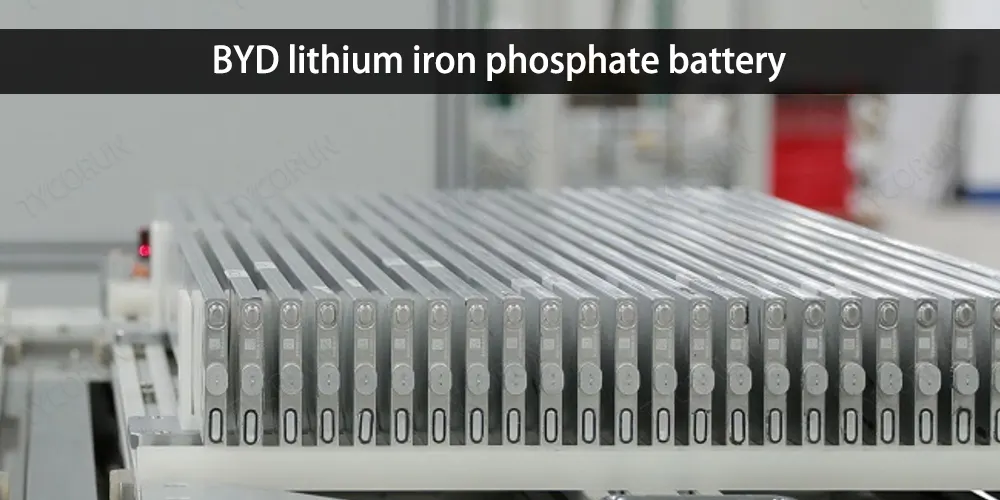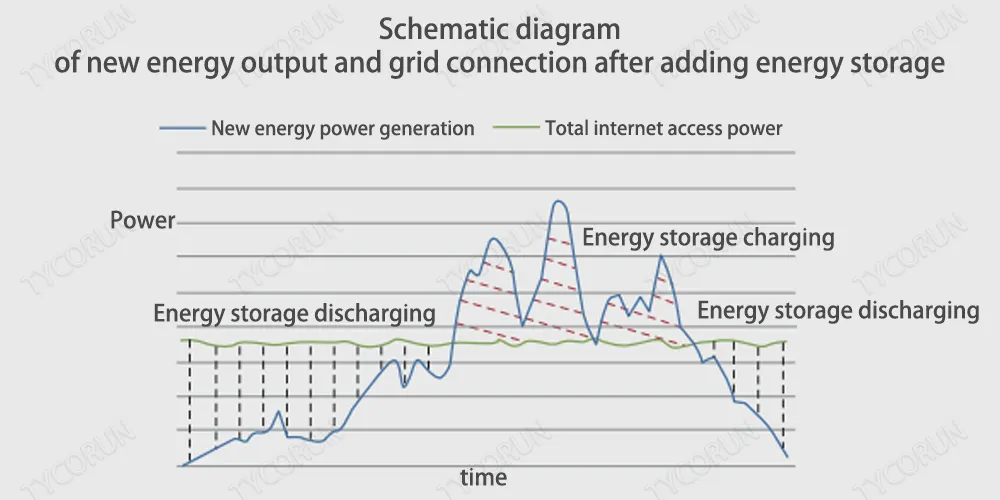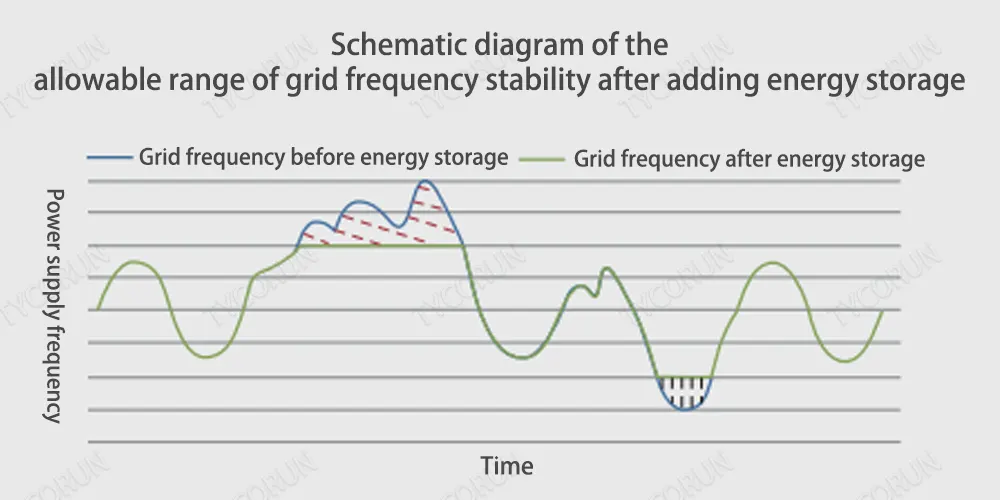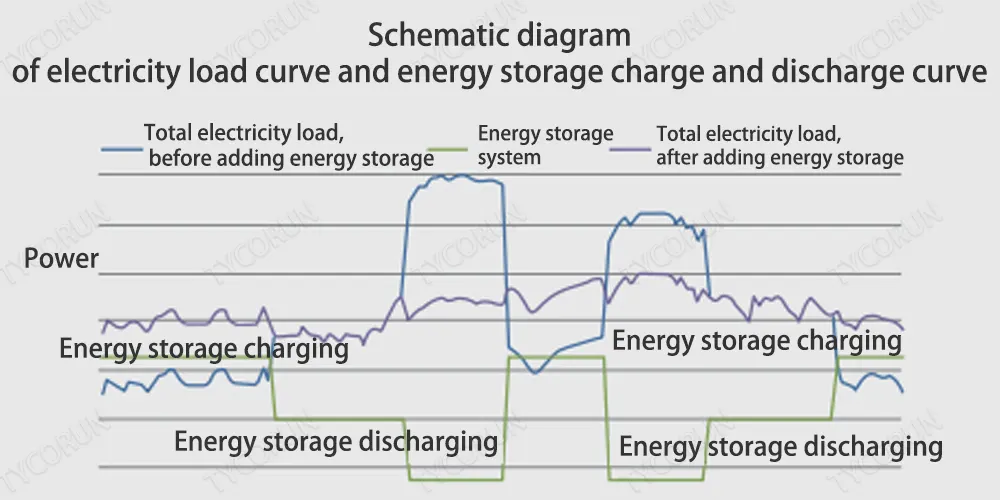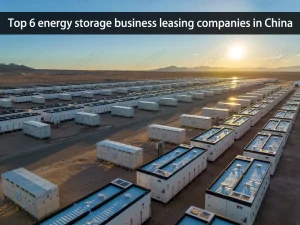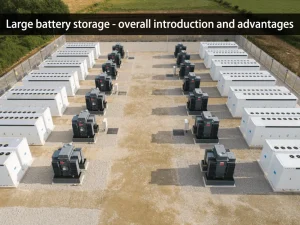Home » battery storage » BYD energy storage system and the application
BYD energy storage system and the application
Relying on advanced iron battery technology, high-power two-way commutation technology and battery management technology to build large-scale energy storage system (ESS) solutions, large-scale energy storage systems can meet various needs of energy storage.
Not only peak regulation, frequency regulation, but also effectively smooth wind energy, solar energy and other new energy power generation output fluctuations, improving the quality of on-grid power, and ensure the safety of the power grid.
Different types of energy storage solutions such as container type and station type are provided according to local conditions to meet the different application needs of customers. BYD energy storage system also shows its superior technical advantages.

BYD power conversion system
BYD is one of the top 5 energy storage battery companies, and the modular power conversion system (PCS) of BYD energy storage system adopts the most advanced three-level inverter technology and modular structure design, and is mainly used for energy conversion, power regulation and frequency modulation of the BYD energy storage system.
Features:
1) DC main circuit
The DC main circuit is mainly composed of a DC circuit breaker, a pre-charging circuit, a discharge circuit, and a DC EMI filter. It mainly realizes functions such as on-off control of battery input, inrush current suppression, overcurrent protection, and electromagnetic compatibility filtering.
2) DC/AC
The DC/AC part is the key part of PCS power conversion, mainly composed of DC capacitors, IGBTs, IGBT drive, and protection modules. Through the high-frequency turn-on and turn-off of IGBTs, AC and DC conversion and bidirectional flow of energy are realized.
3) Sine filter
The sine filter mainly filters the high-frequency harmonics in the high-frequency square wave voltage output by DC/AC, and converts them into sine waves whose harmonics meet the requirements.

4) AC main circuit
The AC main circuit part is mainly composed of AC circuit breaker, AC contactor, AC pre-charging circuit, and AC EMC filter.
5) Signal acquisition
The signal acquisition part mainly realizes the high-precision detection of the DC side voltage and current, the AC side voltage and current signal, the signal processing function and the detection function of the fault signal.
6) Control section
The control section is the core part of PCS. TI high-performance industrial-grade digital signal processor TMS320F28335 is used as the core processor, which supports 32-bit floating-point operations, has a high-speed processing capacity of 150M, dedicated high-precision PWM output, and 16 channels of 12-bit A/D sampling.
7) HMI section
The monitoring and display part uses a 7-inch high-resolution LCD touch screen as the human-machine interface, which provides a friendly human-computer interaction interface and perfectly realizes the PCS local control function.
Advantage:
- ● High conversion efficiency and low output harmonic content
- ● Wide range of allowable working environment temperature
- ● Compact design and easy maintenance
- ● Equipped with humanized touch screen operation interface, convenient for local operation and information query
- ● The remote monitoring system can be used to check and modify system settings, and the maintenance response speed is fast
BYD battery management system
The main functions of the battery management system adopted by BYD energy storage system include:
- Charge and discharge management function;
- Protection function;
- Monitoring function;
- Alarm function;
- Self-diagnosis function;
- Local operating status display function;
- Safety management function;
- Fault diagnosis function;
- Thermal management function;
- Communication function.
Through these functions, the BMS of BYD energy storage system can realize battery status monitoring, operation control, insulation monitoring, management balancing, protection and communication, to ensure the normal, stable and safe operation of the system through real-time detection of battery status, and the consistency of the battery is maintained by balancing the battery to ensure the efficiency and life of the battery system.
The battery management system includes a three-layer structure: battery pack management module (BMU), battery energy control unit (BECU), and battery storage module unit(BSMU).
BMS standby control strategy
1) General downtime control strategy:
During the operation of the system, if the battery state reaches the set limit value such as voltage limit value or SOC limit value, the BYD energy storage battery unit system will automatically enter the standby state.
2) Emergency shutdown control strategy:
If the current failure of the system (such as smoke alarm, etc.) will cause safety accidents such as fire and electric shock, the BMS will immediately feed back the failure information to the local monitoring system and control the PCS to stop the system operation.
If the PCS does not respond within the specified time, the battery management system controls the system to stop the operation of the energy storage battery unit to ensure the safety of the system operation.
BMS online passive balance
During the mass production of single batteries, due to natural fluctuations in raw materials and production processes, the capacity, internal resistance, voltage and self-discharge rate of single batteries will have certain deviations.
During use, with the increase of the number of charge and discharge cycles and the influence of storage time and temperature, the capacity attenuation of the single battery will also be inconsistent, resulting in the inconsistency of the single battery in the same battery string, which reduces the capacity of the entire BYD energy storage battery unit.
Therefore, it is necessary to balance the battery to improve the consistency of the battery. The battery equalization device performs discharge equalization by the BMU. The discharge equalization circuit connects the discharge resistor in parallel with the battery cells through the battery gating switch, and realizes the battery discharge balance by discharging the battery cells.
BYD lithium iron phosphate battery
The lithium iron phosphate battery used in BYD energy storage system can meet the demand for megawatt-level power output. BYD lithium iron phosphate battery has been successfully used in BYD’s pure electric vehicles E6 and K9.
Battery safety
The lithium iron phosphate battery of BYD energy storage system adopts laser welding technology for the special explosion-proof valve and cover plate, and the starting pressure of the explosion-proof valve is stable.
According to various safety battery test internal pressure test data, a reasonable start-up pressure is set to ensure that the single battery will not be explode under various extreme conditions, such as acupuncture, impact, short circuit, overcharge/discharge, fire, pressurization, etc.
Battery string safety
The main circuit design of the lithium iron phosphate battery string used in BYD energy storage adopts multiple protection methods, as follows:
1) Load isolating switch:
It is mainly used to realize the isolation of battery strings.
2) Main contactor:
Under the control of the BMS, the functions of automatic grid connection, off-grid, fault isolation, and grid connection recovery after a fault. When the battery system is in operation, and the BMS detects a fault signal, the unit sends out an alarm message, and at the same time controls the shutdown of the device, so that the system stops running.
3) DC fuse:
The DC ultra-fast fuse is adopted. When an accident or short circuit occurs in the primary circuit of the battery pack, the current value of the main circuit increases instantaneously, and the large current can quickly blow the fuse, thereby cutting off the primary circuit, effectively protecting the battery pack and further preventing from the expansion of the fault.
Application field of BYD energy storage system
Based on BYD’s advanced lithium iron phosphate battery technology, battery management technology, energy conversion technology and control management technology, BYD energy storage system can provide large-scale power energy storage solutions that meet various needs.
The main applications of BYD energy storage system include:
- Power generation side, such as smooth new energy output.
- Transmission and distribution network side, such as grid frequency regulation and peak regulation.
- Power distribution side/user side, such as peak shaving and valley filling, independent power supply.
Smooth new energy output (power generation side)
Facing the increasing demand for energy supply and environmental pollution, new energy sources such as solar energy, as a clean energy source, are increasingly valued by countries all over the world. Due to the intermittent and random nature of solar energy, BYD energy storage system’s power generation on-grid power changes in real time, which has a certain impact on the stability of the power grid.
By controlling the charge and discharge of BYD energy storage to stabilize solar energy output, reduce light abandonment, and maintain the on-grid power within a stable range, to ensure the quality of power supply.
Grid frequency modulation (transmission and distribution grid side)
Frequency modulation can be divided into primary frequency modulation and secondary frequency modulation. The battery energy storage system belongs to secondary frequency regulation. Compared with traditional energy frequency regulation, it has unparalleled response speed and control accuracy, and its frequency regulation effect far exceeds that of traditional rotary power generation equipment.
BYD energy storage system can become a high-quality dispatch resource, and complete frequency regulation tasks by accepting grid dispatch instructions. The frequency fluctuation of the power grid is controlled within the allowable range through frequency modulation.
Peak shaving and valley filling (user side)
With the development of the economy, the importance of the supply-demand balance between power generation and electricity consumption in the power system has become increasingly prominent. The power sector is actively looking for various methods to ensure the safety and reliability of the power system.
Among them, the peak-valley time-of-use electricity price is a relatively common method. Based on the peak-valley electricity price, energy transfer can be realized through energy storage, and energy-saving benefits can be obtained at the same time.
Energy-saving benefit = peak period discharge quantity × peak period electricity price unit price – valley period charging quantity × valley period electricity price unit price – normal period charging quantity × normal period electricity price unit price + other income (such as subsidies).



